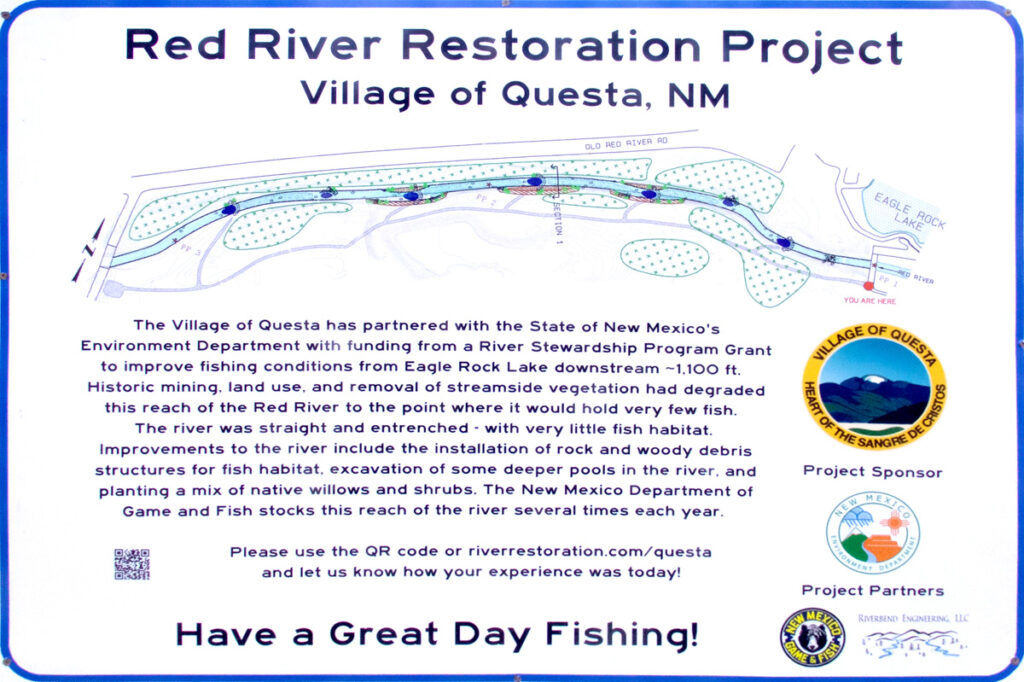
With all the rain that’s fallen recently, it might be easy to forget that only a short while ago, we were all petrified at the thought of losing our forests to drought and fire. Between the record-breaking Hermits Peak/Calf Canyon fire, the Black fire down in Gila country, and several smaller fires, New Mexico has lost the equivalent of around half its Carson National Forest. With the peaks having gone from baked tan to the luxuriant dark green of recent weeks, one could be forgiven for thinking we don’t have a lot of fixing to do, but erosion has already been fierce off scorched hill slopes, and many stream channels have been scoured down to bedrock.
Thanks to the state’s River Stewardship Program, a stream restoration program launched during Governor Bill Richardson’s administration, we’ll begin addressing watershed damage. Administered by the New Mexico Environment Department, River Stewardship funded the extension of the Red River restoration project below Eagle Rock Lake, as well as substantial restoration up in Red River town; a substantial length of the Red River owes its vastly improved function to River Stewardship, not to mention a good length of the Cimarron.

The program is normally funded by the state legislature to the tune of 1.5 million dollars per year, a grossly inadequate figure given how many miles of New Mexico’s streams and rivers that are in dire need of restoration. However, due to a substantial influx of federal infrastructure funding, the 2022 legislature was able to appropriate 11.5 million dollars for River Stewardship.
And not a moment too soon. Much needed projects include a length of Willow and Turkey Creek down in the Gila, streams devastated by the Whitewater Baldy fire (the previous state record). It’s likely that plenty of proposals will be submitted to restore streams damaged by Hermits Peak/Calf Canyon, such as Rio de la Casa, Gallinas Creek, Morphy Creek and others.
The fire also raises the question about how funds should be spent. While River Stewardship leans heavily towards stream restoration on public lands, the fires highlight the importance of understanding that streams provide public benefits no matter where they happen to run. Even if it’s on private property, a stream reconnected to its floodplain will store more water in the water table and will capture peak flows and release water longer into the irrigation season. Holding water in the floodplain is particularly important in our current climate change scenario, in which runoff begins and ends sooner than it used to, before the growing (and fishing) season has begun.
Of special importance to Questa is the potential for River Stewardship to jump start a restoration economy. Again, New Mexico is replete with impaired watersheds, erosional gullies, over-wide streams and, in Questa’s case, streams affected by past mining activities. There is no reason for villages like Questa – with so many well-trained machinery operators – to miss out on the opportunity to repurpose its workforce to accommodate the demands of the burgeoning outdoor economy. Throughout the Rocky Mountains – an area that expects to see increasing occurrence of fires and floods – the need for capable restoration practitioners won’t abate any time soon.
And programs like River Stewardship, especially if adequately funded, will be of critical importance as New Mexico tackles the challenge of safeguarding its increasingly precious water supplies.



